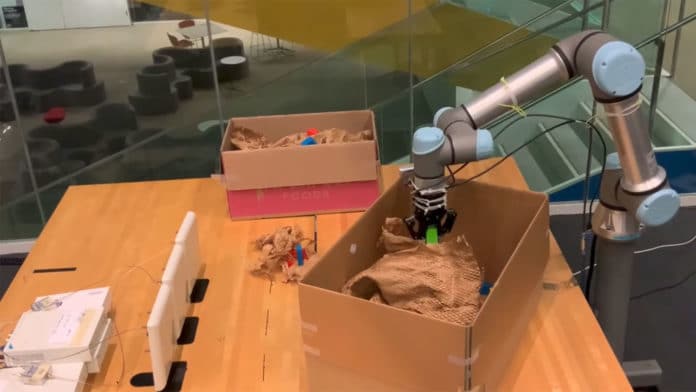MIT pulled a robot out of its hat that uses radio waves, which can pass through walls, to sense occluded objects. The robot, called RF-Grasp, combines this powerful sensing with more traditional computer vision to locate and grasp items that might otherwise be blocked from view.
The team says this advance could one day streamline e-commerce fulfillment in warehouses or help a machine pluck a screwdriver from a jumbled toolkit. Their creation will be presented in May at the IEEE International Conference on Robotics and Automation.
Unlike visible light and infrared radiation, radio frequency signals (RF signals) can pass through cardboard boxes, wooden walls, plastic covers, and colored glass. RF Grasp uses both a camera and an RF reader to find and grab tagged objects, even when they’re fully blocked from the camera’s view. It consists of a robotic arm attached to a grasping hand, and the camera sits on the robot’s wrist.
The RF reader stands independent of the robot and relays tracking information to the robot’s control algorithm. The robot initiates the seek-and-pluck process by pinging the target object’s RF tag for a sense of its whereabouts. Thanks to these two complementary systems, RF-Grasp is able to locate and grasp hidden objects on its own.
Compared to a similar robot equipped with only a camera, the RF-Grasp robot was able to pinpoint and grab its target object with about half as much total movement. In addition, RF Grasp exhibited the unique ability to declutter its environment – removing packing materials and other obstacles in its way to access the target.
RF Grasp could one day perform fulfillment in packed e-commerce warehouses. The researchers also envision potential home applications for the robot, like locating the right Allen wrench to assemble your Ikea chair.
